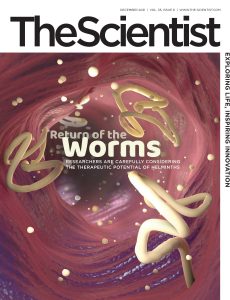
The Scientist – December 2021
English | 60 pages | pdf | 11.12 MB
We’ve come to the close of another year. Unfortunately, if not unpredictably, the COVID-19 pandemic eclipsed 2021 after severely disrupting most of 2020 for most of the world. But while we may be entering the third year of this new and shifting reality, at least we are now equipped with safe vaccines that are effective against the pandemic virus—a scientific feat that was achieved remarkably fast.
Even with the recent upticks in political divisiveness and misinformation spread that have attended this milestone in the course of a challenging pandemic, it’s hard to overstate the triumph of creating a COVID-19 vaccine within a year of the pandemic’s outbreak. For context, vaccines against polio—which first sparked an epidemic in the US in 1894, later paralyzing and killing millions of people in the first half of the 20th century— took two decades from the start of their development in the 1930s to the mid-1950s, when Jonas Salk’s formulation was widely distributed throughout the US and led to a precipitous drop in the number of annual cases. To be fair, science has made great strides in its understanding of basic biology and medicine in the intervening seven decades. But still, the fact that researchers were able to go from detecting and isolating a novel pathogen to effective vaccines in about a year should be considered a marvel.
Almost equally impressive, though, is that with so much research effort and funding bent toward combating a shared foe in SARS-CoV-2, the global biomedical enterprise was still able to pursue lines of inquiry well underway before everything changed in the first part of 2020. Goals such as improving precision gene editing, enhancing the acuity with which single cells can be observed and biologically inventoried, and penetrating ever deeper into neurological structures to characterize their function were not abandoned because of the COVID-19 pandemic, and the results of our annual Top 10 Innovations competition celebrate the fruits of that tenacious labor.
Those well-rounded efforts include products that directly address COVID-19-related challenges, including a SARS-CoV-2 neutralization assay development kit to more accurately measure antibody binding, and a service to characterize single-cell gene expression that could help researchers interrogate exactly how the virus operates. Other spots go to a new platform for brain imaging in freely behaving animals and a couple of organon- a-chip systems that could facilitate in vitro insights that better recapitulate in vivo biology.
The scientific community’s balance of inventions that could save human lives now and those that could improve health and save lives far into the future fills me with hope—not just that biomedicine will keep up the fight against this globe-plaguing virus, but that when the next pandemic comes along, biologists will be ready for it as well. And as life scientists continue to improve the tools and techniques for peering into the intricacies of living organisms, humanity will continue to expand its understanding of life, disease, medicine, and health.
This year has shown us that science has come a very long way in a relatively short time since the years when polio stalked children the world over. As we sit on the precipice of another pandemic year, I am confident that science and its practitioners will continue to rise to the challenge. And for our part, The Scientist Magazine will continue faithfully and honestly reporting developments as they occur.
Editor-in-Chief
[email protected]
Download from: